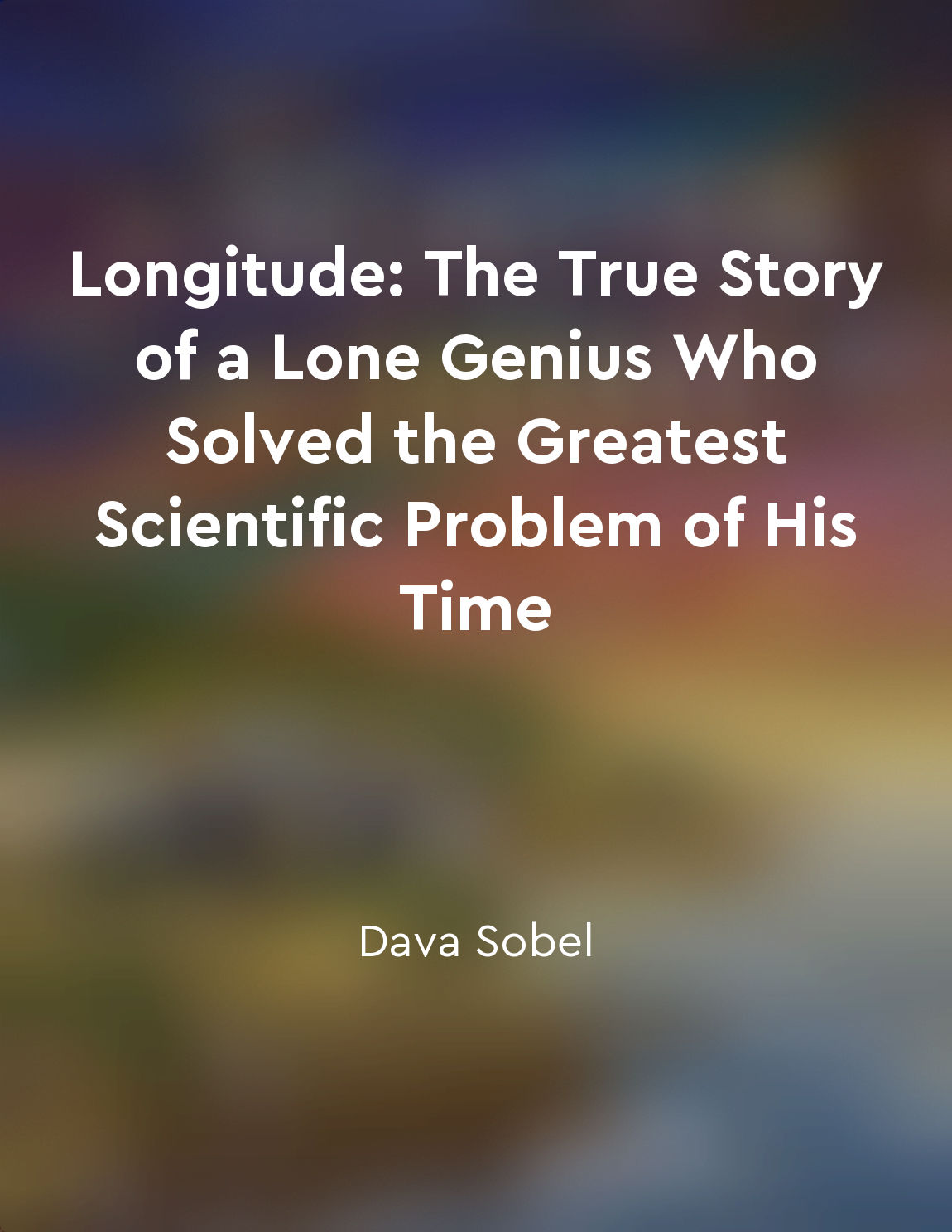Navigational challenge from "summary" of Longitude: The True Story of a Lone Genius Who Solved the Greatest Scientific Problem of His Time by Dava Sobel
The navigational challenge of determining longitude at sea was one of the greatest obstacles facing sailors in the 18th century. Without an accurate way to measure their east-west position, ships were often lost or ran aground with disastrous consequences. The problem was particularly acute on long voyages where even a small error in navigation could lead to a ship missing its target destination by hundreds of miles. Many attempts had been made to solve the problem, but none had succeeded until John Harrison, a self-taught clockmaker, took up the challenge. Harrison believed that the key to determining longitude lay in accurately measuring time at sea. He dedicated his life to creating a timepiece that could keep precise time even in the harsh conditions of a ship at sea. Harrison's first breakthrough came with the invention of the marine chronometer, a clock that was able to keep accurate time despite the pitching and rolling of a ship. This allowed sailors to compare the time on board their ship with the time at a known location, such as Greenwich, England, and calculate their longitude with unprecedented accuracy. The success of Harrison's marine chronometer revolutionized navigation at sea and saved countless lives by enabling sailors to accurately determine their position on the vast oceans. His invention was a triumph of human ingenuity and persistence in the face of a seemingly insurmountable challenge. The navigational challenge had been met, thanks to the genius of John Harrison and his revolutionary timepiece.Similar Posts
The journey of discovery is as important as the destination
Throughout history, humans have embarked on countless journeys of discovery, each filled with challenges, setbacks, and triumph...
Another challenge was the harsh conditions they faced
The expedition faced another challenge in the form of the harsh conditions they encountered. Traveling through rugged terrain a...
The second was established as the unit of time
In the quest to measure the world, the French Academy of Sciences faced the challenge of standardizing units of measurement. On...
He promoted education and public service
Throughout Franklin's life, he remained a strong advocate for education and public service, believing that the key to a success...

Scientific revolution
The Scientific Revolution was a time of great change in the way people thought about the world. It marked a shift from relying ...
The scientific community was skeptical of Harrison's work
Harrison's claim that he could build a clock that would keep time at sea encountered immediate resistance from the scientific e...

Harrison's ultimate triumph
The concept of Harrison's ultimate triumph is a testament to the persistence, ingenuity, and unwavering determination of John H...
